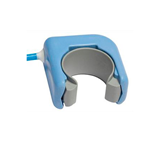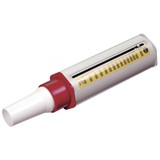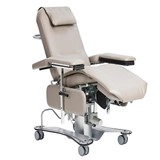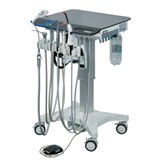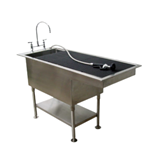Key Takeaways
- Your quote must cover three pillars. A profitable quote includes not just the clinician's time and direct costs (consumables, lab fees), but also a carefully calculated portion of your practice's overheads (rent, utilities, admin staff).
- Informed Financial Consent is your best practice. Providing a clear, written quote that breaks down the total fee, the estimated Medicare/health fund rebate, and the final out-of-pocket cost is now the expected standard of care in Australia.
- Use tiered quotes to provide choice. Instead of a single "take-it-or-leave-it" price, offer patients "Good, Better, Best" options where appropriate. This can increase case acceptance and improve the patient's sense of control.
- Factor in a contingency for variations. For complex procedures, your quote should include a clause that accounts for potential variations. This prepares the patient for the possibility of additional costs and prevents disputes later.
- Underquoting erodes trust, not just profit. The biggest hidden cost of an inaccurate quote isn't the lost revenue; it's the damage to patient trust that occurs when the final bill is unexpectedly higher than the initial estimate.
- Consistency comes from process. Create a "quote bible" with all your standard fees and MBS item numbers, and use role-playing to train your team to communicate costs with confidence and empathy.
- Manage uncertainty with transparency. For complex procedures, use staged quoting or provide a clear cost range to manage patient expectations. This respects the principle of Informed Financial Consent and prevents disputes.
Introduction: The silent killer of practice profitability
In the demanding environment of Australian healthcare in 2025, practice managers are caught in a difficult balancing act. You're focused on delivering exceptional patient care while simultaneously navigating rising operational costs and increasing price sensitivity from patients. A recent report from the Australian Medical Association (AMA) highlighted that the costs of running a practice continue to outpace increases in Medicare rebates, putting immense pressure on private billing.
In this climate, one of the most dangerous and often overlooked threats to your practice's financial health is the underquoted treatment. What may seem like a minor miscalculation on a quote for a minor procedure can quickly multiply, creating a significant cash flow trap and, more importantly, eroding the trust of your patients. This article provides a practical guide for Australian practice managers on how to move from "guesstimates" to a structured, profitable quoting process that ensures financial viability and strengthens the patient relationship.
The true cost of an inaccurate quote
When a treatment is underquoted, the immediate impact is a direct hit to your profit margin. However, the hidden costs are often far greater and more damaging in the long run.
- Erosion of patient trust: The foundation of the patient-practitioner relationship is trust. When a patient receives a final bill that is significantly higher than what they were led to expect, they feel misled. This creates a negative experience that can lead to poor online reviews and a loss of future business from them and their family.
- Increased administrative burden: A disputed invoice creates hours of unproductive administrative work. Your reception and practice management staff are forced into awkward, stressful conversations, chasing payments and trying to justify costs after the fact.
- Clinician stress and burnout: When a practice is not financially healthy, the pressure often falls on clinicians to see more patients in less time, contributing to burnout. Profitable, predictable revenue from correctly quoted procedures is essential for a sustainable pace of work.
The three pillars of a profitable quote
An accurate quote is not just a guess; it's a careful calculation based on three core components. Failing to account for all three is the most common reason for underquoting.
- Clinician and clinical staff time: This is the most obvious cost. It must include the time for the procedure itself, as well as the pre-procedure consultation and any required post-procedure follow-up.
- Direct costs: This includes all the tangible items consumed during the treatment.
- Sterile and non-sterile consumables (dressings, sutures, etc.).
- The specific cost of any products used (e.g., IUDs, skin implants).
- External pathology or laboratory fees.
- Practice overheads: This is the most commonly forgotten pillar. A portion of every single one of your practice's fixed costs, from the rent and electricity to your practice manager's salary, must be allocated to every income-producing activity. A simple way to calculate this is to determine your total hourly overhead cost and add the relevant amount to the time-based component of the quote.
The art of communicating the quote
How you present the quote is just as important as the numbers themselves. The modern standard of care in Australia is built on the principle of Informed Financial Consent. This means ensuring your patient understands the likely costs before they agree to a procedure.
A realistic scenario: The minor procedure
A patient requires a skin lesion to be removed.
- The poor approach: The doctor gives a verbal estimate of "probably around $200 out-of-pocket." Due to the lesion's complexity, the final out-of-pocket cost is $350. The patient is shocked and angry at the reception desk, feeling they were misled.
- The best-practice approach: The practice manager provides a written quote before the procedure is booked. The quote clearly breaks down:
- Total Fee: $550
- Estimated Medicare Rebate: -$200
- Estimated Out-of-Pocket Cost: $350
- Contingency Clause: "Please note, if the lesion requires more extensive work, an additional fee of up to $100 may apply. This will be discussed with you at the time if necessary."
The patient now understands the full potential cost upfront. They can make an informed decision, and their trust in the practice is maintained, even if the final cost is higher.
Leveraging technology for smarter quoting
Manually creating quotes for every procedure is time-consuming. Modern Practice Management Software (PMS) can streamline this process.
- Use templated quotes: Most good PMS platforms allow you to create pre-saved templates for your most common procedures. These templates can automatically pull in the correct MBS item numbers and pre-fill fields for clinician time, consumables, and overheads, allowing your team to generate a consistent and accurate quote in minutes.
- Integrate with your inventory: More advanced systems can link to your inventory management. When you add a specific consumable to a quote, the system can automatically check if it's in stock and flag it for re-ordering, preventing last-minute shortages.
By systemising your quoting process, you reduce the risk of human error and ensure every quote is both accurate and profitable.
Training your team to quote with confidence
An accurate quoting system is only effective if your team can use it consistently and confidently. Inconsistent advice from different staff members is a major source of patient confusion and can undermine trust. A structured approach to training is essential to ensure every patient receives the same clear, accurate financial information.
- Define clear roles. Establish who is responsible for generating quotes in your practice. A good model is to have your administrative team handle quotes for standard, routine procedures using pre-approved templates, while more complex or highly variable procedures are escalated to the practice manager or the clinician for quoting.
- Create a "quote bible." This is your practice's single source of truth for all standard fees. It can be a digital document or a set of templates within your PMS. For each common procedure, it should list the total fee, the relevant MBS item numbers, the standard out-of-pocket cost, and notes on any common variations. This ensures every quote is consistent, regardless of who generates it.
- Role-play difficult conversations. Your team's confidence is crucial when discussing costs. Conduct short, regular training sessions where you role-play common scenarios, such as a patient questioning a high out-of-pocket fee or expressing financial difficulty. This helps your team respond with empathy, accuracy, and professionalism.
A framework for quoting complex or unpredictable procedures
Not all medical treatments are straightforward. For complex or multi-stage procedures, the final cost may not be known upfront. In these situations, the goal of your quote is to provide as much transparency as possible and to manage patient expectations, avoiding surprises down the track.
- Quote in ranges. When the complexity of a procedure can vary, provide a written quote with a clear cost range. For example: "Based on our initial assessment, the out-of-pocket cost for this procedure will likely be between $800 and $1,200, depending on the specific techniques required." This prepares the patient for potential variability.
- Use staged quoting. For treatments that involve a diagnostic and then a therapeutic stage, quote for each part separately. For example: "The initial exploratory procedure and any associated lab work will be $X. Once we have those results, we can provide you with a precise and final quote for the second stage of your treatment."
- Offer tiered options. Where clinically appropriate, provide patients with "Good, Better, Best" treatment options that come with different costs. This is common in fields like dentistry or cosmetic medicine, where different materials or technologies are available. This gives patients a sense of agency and control over their financial decisions.
Conclusion
In the challenging financial environment of Australian healthcare, accurate and transparent quoting is a cornerstone of a well-managed practice. It is the critical link between providing high-quality clinical care and ensuring long-term financial sustainability. By moving to a structured process that correctly calculates costs, communicates them clearly to patients under the principle of Informed Financial Consent, and leverages technology to ensure consistency, you can avoid the cash flow trap of underquoting and build a more profitable and trusted practice.








